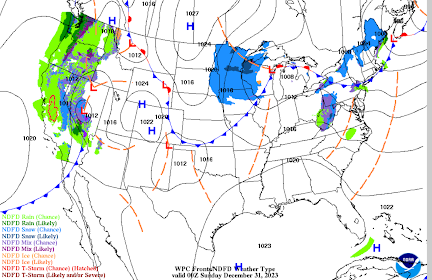Long Range Snow Outlook

Note: Updated Forecast Here ------ © 2023 Mike Smith Enterprises, LLC Please bookmark: www.mikesmithenterprisesblog.com If you are in a business where the location and intensity of snow is important, you'll want to take a look at the forecasts below. Looks like 2024 is going to start out meteorologically active. Snow Forecast through 6pm January 3rd, 2024 Forecast snow for contiguous United States through 6pm Wednesday. Snow Outlook for January 4 through 12 It appears we will have a very active storm track beginning the middle of this week and continuing through the end of next week. Above, I have provided some general geography to assist you for planning. I developed the above forecast before the 6-10 day precipitation probability forecast was published by the National Weather Service. It is below. If you compare the eastward bulge through KS and OK, you'll notice it has a similarity to my area of where heavy snow is more likely. That indicates the NWS is viewing this po
















